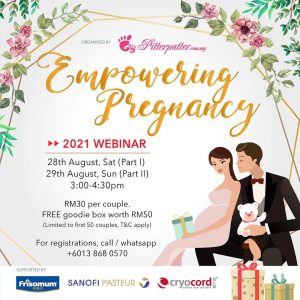Stages of labour
 There are three stages of labour:
There are three stages of labour:
(i) The first stage of labour
It is defined as the onset of labour until the cervix is fully dilated up to 10 cm. The first stage of labour can be subdivided into the latent phase and active phase
The latent phase starts from the onset of labour until the cervix is dilated up to 3-4 cm. This may take up to a few days
The active phase continues until the cervix is fully dilated (10 cm). During the active phase, the cervix usually dilates at the rate of at least 1cm/hour.
What to expect during the latent phase of labour?
During the latent phase labour, the cervix will efface and dilate up to 3-4cm. This will take up to 8-12 hours. The contractions are usually mild, 10-30 minutes apart and lasting for 20-35 seconds each. You should relax during this phase and there is no need to rush to the hospital or birthing centre immediately. Doing simple routine at home, taking small walks are ways to improve the contractions and further enhance the cervical dilatation and effacement. You can eat and drink as normal but avoid heavy and oily meals as this may be accumulated in your stomach causing reflux
What to expect during the active phase of labour?
When the contractions become more regular and intense and happening at a shorter interval (5-10 minutes apart) and lasting more than 40 seconds, you should call your health care provider and get yourself admitted to the birthing centre or hospital. You would expect your cervix is more than 3-4 cm dilated. At this stage of labour, the cervix usually dilates at the rate of at least 1cm/hour.
When you arrived at the birthing place of your choice, your healthcare provider will examine your blood pressure, pulse rate
(ii) The second stage of labour
It is defined as the stage when the cervix is fully dilated up to the delivery of the baby
If childbirth is like running a marathon, then the second stage of labour is equivalent to the last 100m sprint of the run. You are almost there but not quite yet….Up until now, your cervix and your uterus have done most of the work, now the dilatation of the cervix is complete, it is time for you to push!!!!
The second stage of labour usually last anywhere between 20 minutes to 2 hours depending on the number of deliveries you had before and whether you have an epidural for pain relief. The second stage of labour is usually longer if you are having your baby for the first time. If you have an epidural for pain relief, your attending obstetrician may even allow your second stage of labour to last up to 2 or 3 hours.
What to expect during the second stage of labour?
During the second stage of labour, you would notice that the contractions are more frequent and lasting longer (about 45-90 seconds). You may feel a strong urge to push. However, if you have an epidural for pain relief, you may not be able to feel the urge to push. Apart from the urge to push, you may also feel strong pressure at your back passage (rectum), which may be associated with slight bowel movement or urinary accident. Some women also notice increased in bloody show.
The baby’s head will eventually become visible at this stage (crowning). You may feel a stretching, burning or stinging sensation at your birth canal (vagina) as your baby’s head emerge. Your birth attendant will instruct you as what to do at this stage.
What to expect when you are pushing and what to do?
It is time to get the baby out and getting into a good pushing position may ease the process (which one will depend on the birthing bed or chair, or your practitioner’s preference, but most importantly what is most comfortable and effective for you). A semi-sitting or semi-squatting position may be ideal as these positions utilize gravity to your advantage.
Once you have the urge to push, give it all you got. The more effective you push, the sooner the whole ordeal will be over and the more quickly you will meet you baby. However, one must not panic as disorganized pushing will waste your energy and accomplish little.
Certain tips may be helpful to ease your pushing:
- Relax your body, pelvic floor and back passage (anal area)
- Focus your energy on your vagina and rectum, not your upper body or face (arching your body will not help, resulting in back pain after delivery. The same goes to straining with your face, this will cause you to have bloodshot eyes and do nothing to help you to get your baby out)
- Rest between contractions. This helps to save your energy and get you ready for effective pushing when the contractions starts
- You could use a mirror to look at the progress of your pushing once the baby’s head become more visible. This gives you more motivation to push when the pushing gets tough. Seeing your baby’s head crown can be very encouraging.
What can your birthing partner do to help:
- Help the expecting mother to relax by keeping her as comfortable as possible. Giving her sips of water or ice cubes can be very welcoming, labour is hard work and required a marathon runner’s stamina and hydration. You can also support her in her position which she prefers.
- Encourage her with positive phrases
- Praise her when she is doing the right thing
- Guide her through her contractions, she may not feel the contractions if she has an epidural for pain relief. You could guide her by placing your hand on her tummy and feel for the contractions
- Do not become upset if the expecting mother becomes angry and vent her emotional at you. Staying cool and calm will help to calm down the expecting mother
What can you expect when you meet your baby:
- Your baby has just been through a challenging journey after being soaked in a sac of amniotic fluid for nine months and then being pushed through a narrow birth canal. Sometimes, after extensive pushing, you may find the baby’s head in a funny cone-shaped. This is perfectly normal and you need not worry about it. Your baby’s head will return to its normal shape in the matter of days
- Your baby may be covered by vernix which is a cheesy substance that coats the baby in your womb. This can be wiped away easily
- Fine lanugo hair which covers the shoulder, back and forehead
- Puffy eyes
(iii) The third stage of labour
It is defined as the time following the delivery of the baby to the expulsion of the after birth (placenta). The process is anywhere between 5 to 30 minutes
What to expect & what to do:
After the delivery of your baby, the umbilical cord will be cut by your healthcare provider (your birthing partner may be given the chance to do this at your request if you have discussed this with your healthcare provider). The baby may be handed to you immediately for skin to skin care to promote bonding with you. While you and your partner are enjoying your baby, your healthcare provider will be waiting for small contractions to begin. This is a sign that the placenta (after birth) is separating from your womb (uterus). Sometimes you may experience a small gush of blood. Your healthcare provider may facilitate the process by placing a hand on your womb while pulling on the umbilical cord. This will result in the delivery of your placenta. After which, your healthcare provider will stitch up the episiotomy wound if you required an episiotomy to deliver your baby.
During the third stage of labour, your healthcare provider may be able to help you to collect some blood from the umbilical cord for storage as new evidence has shown that stem cells from the cord may have some potential medical use in the future. Please refer to the topic: Cord blood banking for further information
You have now completed the whole process of labour and your healthcare provider will monitor you for the next few hours to ensure that your womb was well contracted and there was no excessive bleeding.
You and your partner can now enjoy your little bundle of joy! Congratulations!!!!
What can your partner do?
- Give her praises for all the hard work
- Give her some water to rehydrate her
- Remember to bring along the camera or video camera for the big moment
- Cuddle the baby







